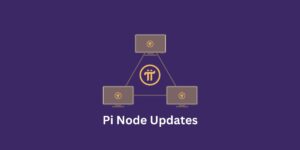1. Introduction to the Flare Network and its purpose
The Flare Network is a decentralized, open-source blockchain platform that aims to provide a simple and coherent stack for decentralized interoperability. In other words, Flare’s goal is to connect different blockchain networks, allowing them to interact with each other and exchange data and assets in a secure and efficient way.
The Flare Network was created in response to the growing need for a platform that could bridge the gap between different blockchain networks, which often operate in silos and lack interoperability. By providing a decentralized solution for interoperability, Flare aims to create a more connected and inclusive ecosystem, where developers and users can benefit from the unique features and capabilities of various blockchain networks.
One of the main benefits of the Flare Network is that it allows developers to build decentralized applications (dApps) on top of it, using the Ethereum Virtual Machine (EVM) and existing Ethereum tools and technologies. This means that developers can leverage the power and flexibility of the EVM to build dApps that can interact with other blockchain networks and take advantage of the security and scalability of the Flare Network.
In addition to providing a platform for decentralized interoperability, the Flare Network also aims to address some of the challenges that have hindered the adoption of blockchain technology. These include the need for scalability, security, and usability, which are essential for mainstream adoption of blockchain-based solutions. By addressing these challenges, the Flare Network aims to make it easier for developers and users to build and use decentralized applications that can solve real-world problems and create value for society.
2. Flare Network background and its history
The Flare Network is a decentralized blockchain platform that aims to provide scalability and interoperability for smart contract networks. It was founded in 2020 by a team of six developers who were motivated to solve the limitations of existing blockchain networks, particularly the lack of smart contract support on certain platforms and the one of the main goals of Flare is to expand the functionality of the Ripple network, which is optimized for payment and fund transfer but has limited use in other areas.
By integrating the Ethereum Virtual Machine (EVM) into its infrastructure, Flare allows for the execution of Turing-complete smart contracts on the Ripple network, enabling it to serve as a scalability solution for other smart contract networks and security concerns surrounding proof-of-stake consensus algorithms.
In July 2021, Flare Network conducted an airdrop of 100 billion FLR tokens to eligible XRP holders, with the goal of expanding the reach and adoption of the network. XRP holders are able to claim their FLR tokens in a 1:1.0073 ratio based on their XRP holdings at the time of the snapshot. The initial airdrop of 15% of claimable FLR tokens will take place when the Flare Network exits observation mode, with an additional 3% being claimable each month thereafter.
3. The team behind the Flare Network
The team behind the Flare Network consists of a group of experienced developers who have worked on customizing, integrating, auditing, and verifying every building block of the network’s infrastructure.
The Flare Network was co-founded by Hugo Philion along with Naïri Usher and Sean Rowan. Philion who is also the CEO of the Flare Network whereas, Usher is titled as Chief Saintliest and Rowan as CTO of the company.
Philion LinkedIn profile suggests that he graduated from UCL, majoring in Machine Learning. Meanwhile, Usher LinkedIn profile suggests that she is a Postdoctoral Researcher in Quantum Machine Learning.
According to the Crunchbase, Flare Network has the total of 38 Employees along with 3 Board Members & Advisors.
The team behind the Flare Network has a strong focus on security and has worked extensively to ensure that the network is well-protected from potential attacks. In addition to their technical expertise, the Flare Network team also has a strong understanding of the needs of the DeFi community and has designed the network with this in mind.
Overall, the team behind the Flare Network is highly experienced and dedicated to building a decentralized platform that is secure, scalable, and user-friendly. With their extensive background in blockchain development and their deep understanding of the DeFi space, the team is well-equipped to continue building and improving upon the Flare Network.
4. Overview of the Flare Token Distribution Event (TDE)
The Flare Token Distribution Event (TDE) is a crucial moment for the Flare Network, as it marks the official release of the Flare (FLR) token to the public. The TDE is scheduled to take place on January 9, 2023, and a number of major exchanges have already confirmed their participation in the distribution.
Some of the exchanges that have agreed to distribute FLR to their customers within two weeks of the TDE include Binance, Kraken, KuCoin, Bitfinex, OKX, BitStamp, etc. It’s worth noting that this list may be subject to change, and more exchanges may be added as the TDE approaches.
As for how the tokens will be distributed, it’s important to understand that Flare (FLR) is a utility token that will be used to power the Flare Network. It will provide support for various functions on the network, including incentivized delegation to the Flare Time Series Oracle (FTSO), collateral within decentralized applications, participation in network governance, and transaction fees to prevent spam attacks.
When the TDE takes place, exchanges will be responsible for distributing FLR to their customers in accordance with their own policies and procedures. It’s worth noting that Flare tokens will only be released to exchanges that have confirmed their commitment to distribute the tokens to their customers within a reasonable period of time. If an exchange does not provide this confirmation within six months of the TDE, the Flare Foundation will burn the tokens.
Overall, the Flare Token Distribution Event is a major milestone for the Flare Network, and it will be interesting to see how the market reacts to the release of the FLR token. With its focus on providing a technology stack for decentralized interoperability, the Flare Network has the potential to revolutionize the way we think about smart contracts and cross-chain communication, and the TDE is just the beginning of this exciting journey.
5. Flare network token (FLR) tokenomics
The Flare Network utilizes the Flare (FLR) token as its native currency. The total supply of FLR tokens is 100 billion, with the distribution planned as follows:
- 28.5 billion FLR will be distributed to the community over a 36-month period
- 20 billion FLR will be available for community members who bring value to the Flare Network through the use of cross-chain bridges (F-Assets and Layer Cake)
- 9.8 billion FLR will be allocated to the Flare Foundation for community and ecosystem initiatives
- 5.7 billion FLR will be provided to early stage backers, vesting from month 6
- 13.5 billion FLR will be allocated to existing and future team members, plus advisors. The team is restricted from selling any FLR in the first 6 months, no more than 10% of their holdings in the first 12 months, and no more than 25% (inclusive of the initial 10%) of their holdings within the first 18 months.
- 12.5 billion FLR will be allocated to Flare Networks Limited, responsible for native product development on Flare
- 10 billion FLR will be allocated to the Flare VC Fund, which will invest in promising ecosystem projects
In total, 58.3 billion FLR will be allocated to the community and 19.2 billion FLR will be allocated to team, advisors, and backers. 22.5 billion FLR will be allocated to Flare entities.

FLR tokens will have a variety of uses within the Flare Network, including participating in network governance, paying transaction fees to prevent spam attacks, serving as collateral within third party decentralized applications built on Flare blockchains, and earning rewards through incentivized delegation to the Flare Time Series Oracle (FTSO).
It’s worth noting that these distribution figures are subject to change based on the outcome of Flare Improvement Proposal 01 (FIP.01). If FIP.01 is approved, there will be additional distribution of FLR tokens to the community through delegation incentives. If FIP.01 is rejected, the distribution will follow the original plan as described above.
6. Features and capabilities of the Flare Network
Scalable EVM-based smart contracts
The Flare Network is a layer-1 blockchain that aims to connect everything through its technology stack. One of the key features of the Flare Network is the ability to offer scalable EVM-based smart contracts. These smart contracts allow for the creation of decentralized applications (dApps) that can be used for a variety of purposes, including decentralized finance (DeFi) and decentralized autonomous organizations (DAOs).
Decentralized price feeds
In addition to offering scalable smart contracts, the Flare Network also has decentralized price feeds through its Flare Time Series Oracle (FTSO). The FTSO is a native oracle for time series data such as cryptocurrency prices, providing applications on the Flare network with rapidly updating and highly decentralized data. No single party is in control of the process, and it would take a significant amount of effort to disrupt.
Secure state acquisition from other blockchains
The Flare Network also offers secure state acquisition from other blockchains. This means that the network can acquire the state of another blockchain, such as Ethereum, and use it as the starting point for a new Flare blockchain. This allows for the creation of sidechains that are anchored to another blockchain, providing added security and scalability.
The superior bridging for smart contract and non-smart contract assets
Finally, the Flare Network has superior bridging capabilities for both smart contract and non-smart contract assets. This means that it is possible to move assets, such as XRP or Bitcoin, onto the Flare Network and use them within smart contracts. This allows for greater interoperability between different blockchain networks and opens up new possibilities for using these assets in decentralized applications.
7. Use cases for the Flare Network
Decentralized finance (DeFi) applications
The Flare Network has a number of potential use cases, including in the realm of decentralized finance (DeFi). Decentralized Finance (DeFi) refers to financial products and services that utilize blockchain technology and operate without traditional financial institutions like banks. Instead, they rely on decentralized networks to facilitate transactions and provide financial services.
The Flare Network’s scalable EVM-based smart contracts, decentralized price feeds, and secure state acquisition capabilities make it well-suited for building DeFi applications.
Cross-chain asset exchange
One of the capabilities of the Flare Network is enabling cross-chain asset exchange, allowing for seamless transfer and exchange of assets between different blockchain networks. Currently, assets on different blockchain networks are siloed and cannot be easily exchanged with each other.
The Flare Network’s superior bridging capabilities allow for the exchange of assets between different blockchain networks, improving interoperability and expanding the potential pool of assets available for use in applications.
Transfer of data between different blockchain
Additionally, the Flare Network’s secure data relay feature allows for the transfer of data between different blockchain networks in a secure and decentralized manner. This could be used for a variety of purposes, such as enabling the transfer of personal identity data between networks for use in decentralized identity applications.
Overall, the Flare Network’s features and capabilities make it a promising platform for a wide range of decentralized applications and services.
8. The Flare Time Series Oracle (FTSO)
The Flare Time Series Oracle (FTSO) is an integral part of the Flare Network and serves as its native oracle for time series data such as cryptocurrency prices. Its purpose is to provide applications on the Flare network with real-time, highly decentralized data that is both accurate and reliable.
One of the key features of the FTSO is its decentralization. It relies on a network of independent data providers to retrieve price pair information from external sources, such as centralized and decentralized exchanges. From this data, a final price estimate is calculated. Each data provider’s submission is weighted by its stake and any stake delegated to it by Flare token holders, reflecting the community’s trust in that particular provider.
The resulting price estimates are then published on the Flare blockchain, and data providers that supplied useful price pair information close to the final estimate are rewarded. These rewards are shared with the token holders that delegated to them, providing an incentive for data providers to consistently provide accurate information.
The FTSO is designed to be rapidly updating, with data currently being refreshed every three minutes. In the future, it is possible that this interval may be shortened even further. In addition to providing price data, the FTSO is also extendable, meaning that more prices and other time series data sets can be added as needed.
Overall, the FTSO plays a crucial role in the Flare network by providing a decentralized and reliable source of real-time data that can be used by a wide range of decentralized applications. Its incentivized model ensures that data providers have a vested interest in providing accurate information, further increasing the reliability of the data being provided.
9. Network governance and the role of Flare tokens
The Flare Network utilizes a decentralized governance model in which token holders are able to participate and make decisions about the direction and development of the network.
One way in which token holders can get involved is through the process of incentivized delegation, where they can delegate their Flare tokens to the Flare Time Series Oracle (FTSO) in order to earn rewards.
The FTSO is a decentralized oracle that provides applications on the Flare network with rapidly updating time series data, such as cryptocurrency prices. It relies on a network of independent data providers to retrieve this information from external sources and compute a final price estimate.
These data providers are weighted by their stake in the network and any stake delegated to them by Flare token holders, reflecting the community’s trust in their ability to provide accurate and reliable information.
Token holders to earn rewards through incentivized delegation to the FTSO
Token holders who choose to delegate their tokens to the FTSO are able to earn a share of the rewards earned by the data providers they have delegated to. This provides an incentive for token holders to participate in the governance of the Flare Network and contribute to the maintenance and improvement of the FTSO.
In addition to earning rewards, token holders who delegate to the FTSO are also able to participate in network governance through the use of their voting power. This allows them to have a say in the decisions being made about the direction and development of the Flare Network.
Overall, the role of Flare tokens in network governance and incentivized delegation to the FTSO is an important aspect of the Flare Network’s decentralized and community-driven model. It allows token holders to actively participate in the decision-making process and earn rewards for their contributions to the network.
10. Flare Network: Partnerships and collaborations
The Flare Network has established a number of partnerships and collaborations with leading companies and organizations in the blockchain and technology sectors. These partnerships serve to expand the reach and adoption of the Flare Network, as well as to contribute to the development of new features and capabilities for the platform.
One example of a partnership for the Flare Network is with Pawnfi, The Flare Network and Pawnfi are collaborating to allow Non-Standard Assets (NSAs) to be used on the Flare Network. NSAs are any type of fungible or non-fungible asset that is difficult to liquidate, such as NFTs, liquidity provider tokens, GameFi assets, or even just fungible tokens for smaller projects.
Pawnfi enables owners of these assets to make better use of them through pawning, leasing, or selling. By joining the Flare Network, Pawnfi will be able to access multiple major blockchains and assets, increasing its reach, while Flare users will have access to Pawnfi’s solutions for less liquid assets.
The collaboration will also bring a large portion of Pawnfi’s 280k active user base to the Flare Network and enhance Flare’s presence in the DeFi space. Pawnfi will also provide fair assessment methods for NSAs on the Flare Network, which will be available for use by other Flare network members.
Another partnership for the Flare Network is with the XRP Community Fund, which is a community-led initiative that supports the development of projects and initiatives that benefit the XRP ecosystem. This partnership allows for the development of new cross-chain solutions and other projects that utilize the Flare Network and XRP Ledger.
In addition to these partnerships, the Flare Network has also established collaborations with leading research institutions and universities. These collaborations allow for the development of new research and development initiatives, as well as the sharing of knowledge and expertise in the field of decentralized interoperability.
Overall, the partnerships and collaborations of the Flare Network serve to strengthen the platform and its position as a leading player in the decentralized interoperability space. These partnerships and collaborations also offer the potential for new and exciting developments in the future, as the Flare Network continues to grow and evolve.
11. Comparison to other interoperability projects
The Flare Network is one of many projects aiming to address the issue of interoperability within the blockchain ecosystem. The ability for diverse blockchain systems to work together and share data with one another is known as interoperability. This is a key challenge facing the widespread adoption of blockchain technology, as currently most blockchains operate in isolated environments and cannot easily interact with one another.
There are a number of other projects working on solutions to this problem, such as Cosmos, Polkadot, and Aion. These projects aim to create networks that can connect different blockchains and facilitate the exchange of information and assets between them.
So how does the Flare Network compare to these other interoperability projects? One key difference is that the Flare Network is built on a new blockchain protocol called Avalanche, which is designed to be highly scalable and efficient. This allows the Flare Network to support a larger number of transactions per second compared to other networks, which could make it more attractive for use in high-volume applications like decentralized finance (DeFi).
In terms of its capabilities, the Flare Network also offers a number of unique features that set it apart from other interoperability projects. These include its ability to support smart contracts using the Ethereum Virtual Machine (EVM) and its decentralized price feeds through the Flare Time Series Oracle (FTSO). These features give the Flare Network the potential to be used for a wide range of applications beyond just interoperability, such as DeFi, asset exchange, and data relay.
Overall, the Flare Network is a promising project that is worth keeping an eye on as it continues to develop and expand. Its combination of scalability, smart contract capabilities, and decentralized price feeds make it an interesting player in the interoperability space and one that could have a significant impact on the future of blockchain technology.
12. In Conclusion
The Flare Network is a decentralized blockchain platform that aims to provide a simple and coherent stack for decentralized interoperability. In other words, Flare’s goal is to connect different blockchain networks, allowing them to interact with each other and exchange data and assets in a secure and efficient way.
Its native token, Flare (FLR), is designed to prevent spam attacks on the network by requiring a fee for transactions. In addition to being used as a means of paying transaction costs, Flare can also be used for providing data through an on-chain oracle, participating in protocol governance, and collateralizing decentralized apps.
One of the key advantages of the Flare Network is its ability to enable cross-chain interoperability through its FLR Dependent Applications, which allow for trustless representation of tokens on other networks. This opens up the possibility for a wide range of assets, including non-fungible tokens and liquidity provider tokens, to be used on Flare.
Looking to the future, the Flare Network has the potential to revolutionize the way we use blockchain technology by enabling decentralized applications to access and use information from other blockchains in a secure and trustless manner. This could lead to a new era of utility, including fully-interoperable multichain solutions, decentralized incorporation of real-world data in Web3 decentralized applications, and decentralized and insured multilateral bridging.
In terms of upcoming developments, Flare Network has already begun rolling out its initial airdrop of FLR tokens to eligible XRP holders. Additionally, Flare has announced plans to enable cross-chain communication between Ethereum and Flare, as well as other major blockchains, through its LayerCake protocol. Overall, the future looks bright for the Flare Network and its potential to transform the way we use blockchain technology.








We’re a group of volunteers and opening a new scheme in our
community. Your web site offered us with valuable info to work on. You’ve done an impressive
job and our whole community will be thankful to you.